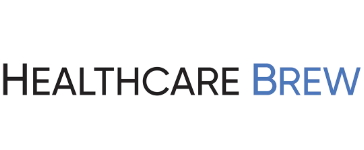We experienced it during the pandemic, we see it in the news, and sometimes we even notice it during our weekly shopping trips. Product shortages and supply chain disruptions have become headlines since 2020. But no one seems to cover the teams and people who solve for these disruptions.
As the supply chain operators for a 48-hospital system, our team knows too well what it takes to overcome product challenges. In health care, we have very high stakes. We need solutions quickly so patient care isn’t interrupted.
Sometimes, it’s easy to identify a solution or next step – maybe we have an alternative already in use and can simply purchase more in the interim. However, more often than not, the answer to a product disruption can often become complex. During a health care product disruption, it takes an interdisciplinary approach to assess the situation and outline a clear path forward.
A complex product disruption occurs
In April of this year, a supply chain operations site leader at a health system notified the Advantus Health Partners Clinical Transformation team they were running into issues securing the AccuDrain External CSF Drainage System. The AccuDrain is a critical product that drains cerebrospinal fluid (CSF). Hospitals use it primarily for neurosurgical cases, but it also crosses into the cardiovascular space for ICP monitoring, TEVAR and thoracic AAA repairs.
In collaboration with the supply chain operations director, Clinical Transformation worked with the vendor to understand the cause of the disruption. They discovered the vendor relied on a third-party production CSF sampling site. Unfortunately, that site recently went out of business. While the vendor was in the process of seeking FDA approval for a new sampling facility, they didn’t expect approval and product resolution until early 2024.
The entire hospital system needed a substitute product, now and for the foreseeable future. With input from Operations, Clinical Transformation, and Sourcing, we worked to identify four steps toward the best path forward.
1. We notified stakeholders
Clinical Transformation sent out an SBAR (Situation, Background, Assessment, Recommendation) communication to notify clinical and non-clinical stakeholders across the hospital system about the ongoing disruption impact and next steps. They also provided instructions on how to order additional substitutes through other vendor partners.
At this point, the power of leveraging a large health system truly has benefits. Thirty supply chain operations directors across a health system came together to discuss mitigation plans, allocation strategies and product access. Working together, they ensured their locations had access to the product while a long-term strategy could be determined.
2. We identified substitutes
In the short term, front-line providers had options for ordering and receiving a substitute product. Since April, some sites had started using the same alternative vendor to secure products. However, in early June, this alternative vendor laid off most of its sales force, making purchasing the substitute impossible. This new shortage presented another hurdle.
Supply chain operations leaders continued to work with other clinically-approved vendors to purchase trunk stock and build out a safety stock based on what became available.
3. We worked behind the scenes
Fortunately, our Clinical Resource Program Managers (CRPMs) had already started to work behind the scenes with clinical leadership to assess the level of risk at each site. This complex problem needed a custom approach.
Knowing each hospital operates differently and has different service line priorities, facilities with comprehensive stroke centers and high neuro volume became a primary focus. We grouped hospitals into high, medium, and low-risk categories and designated each rank with mitigation plans.
The Advantus Health Partners Clinical Transformation team could present a clear view of the disruption impact by leveraging historical purchase data, analyzing patient volume statistics and collaborating with clinical leadership.
When supply chain teams align with hospital leadership and have a seat at the decision-making table, collectively, leaders can more easily identify solutions, validate data and make quick resolutions.
4. We implemented a long-term solution
At the same time the Clinical Transformation team found a substitute product and planned mitigation, the hospital system found LiquoGuard, a clinically acceptable substitute with long-term viability. The hospital system had already clinically vetted the product, and it was readily available.
However, using this new product required a capital investment. So, our capital team engaged hospital and market CFOs to assess purchasing the needed capital equipment. They asked high-risk hospitals (with high comprehensive stroke and neuro volumes) to buy new equipment to accommodate the LiquoGuard product. CFOs reacted favorably to the strategy presented. The Sourcing team even negotiated a lower price based on the purchase volume and coordination between sites.
These CFOs approved the purchase of new capital within 48 hours. In a time of capital constraint, financial leaders knew they needed to move forward – based on the communication, collaboration and assessment our team had done.
5. Patient care continues without disruption
Thankfully, this product disruption never once impacted care delivery across the hospital system. The proactive communication from operations, immediate response from Sourcing and the Clinical Transformation team and the continued collaboration between all three helped resolve the disruption. Supply chain optimization takes a team approach internally, and when allowed a seat at the leadership table, alignment comes easily across the entirety of health care delivery.










